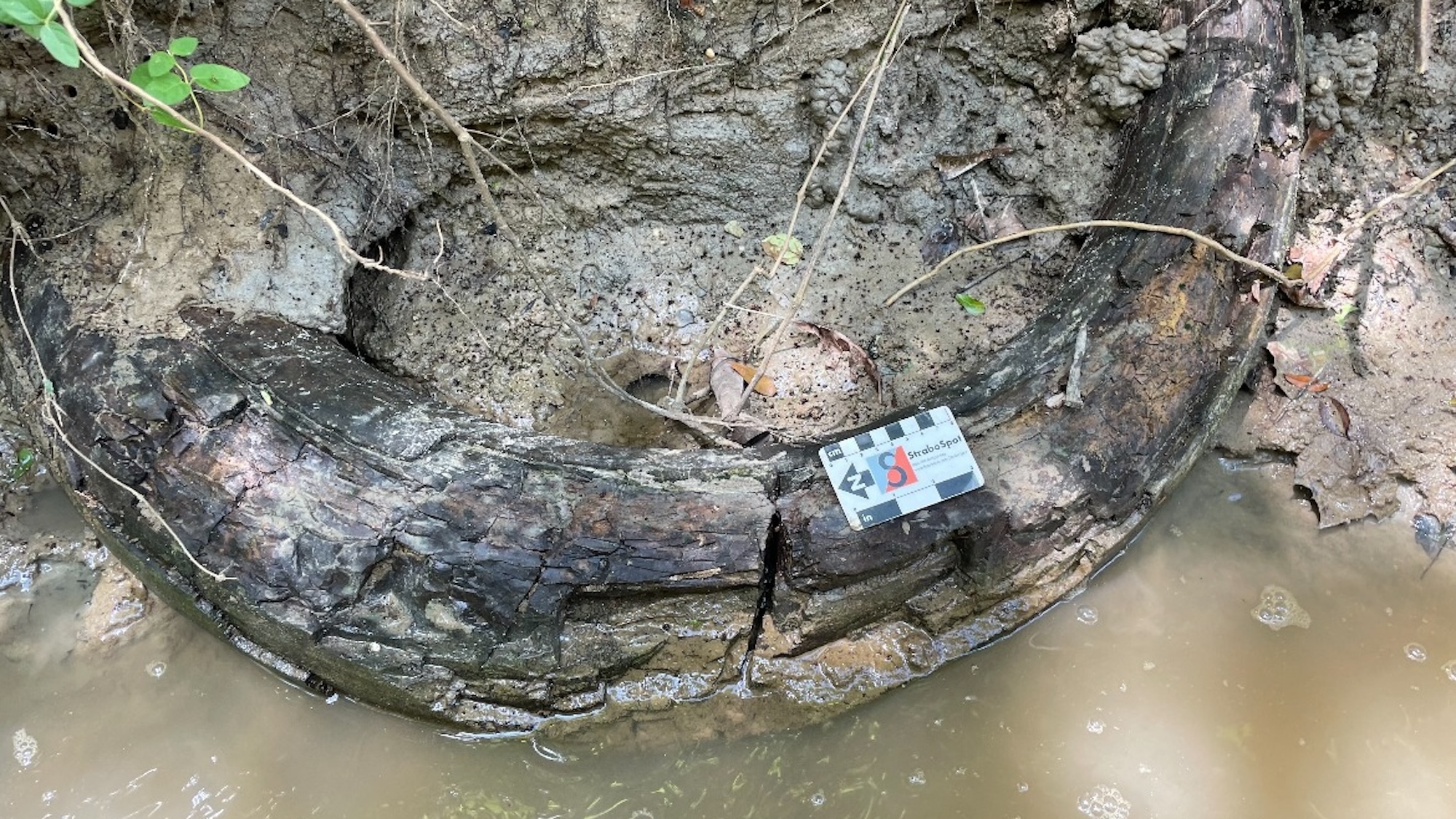

A fossil collector recently stumbled across a major find while exploring rural Mississippi—the state’s first confirmed mammoth tusk. But finding it was only the first of many hurdles to recovering the rare specimen.
Although woolly mammoths and mastodons often draw most cultural attention, the two species were far from the only elephant ancestors to roam North America. What’s more, they weren’t even the largest—that honor went to the Columbian mammoth. Reaching nearly 14-feet-tall at the shoulders and weighing around 10 tons, Mammuthus columbi remained ice age giants until their eventual extinction around 12,700 BCE. Modern day Mississippi, however, hosted fewer of them than their relatives due to their grassland grazing preferences. Still, mammoths did make their way to the Deep South, as evidenced by a number of fossilized teeth collected there over the years. And until recently, teeth were all researchers in Mississippi had—until a man named Eddie Templeton decided to take a walk.

As first highlighted on August 13 in The Clarion-Ledger, the artifact and fossil collector recently decided to scour for new finds in a rural region of Madison, outside Jackson. While traversing a muddy creek, Templeton noticed a sizable relic sticking out from a clay and sand embankment.
“It was exciting. I knew it was a tusk,” Templeton told the local newspaper.
But given mammoths’ Mississippi rarity, he initially believed the fossilized ivory belonged to a smaller mastodon. After enlisting the help of the Mississippi State Geological Survey (MSGS), however, it became clear Templeton had come across something much more elusive.
“It was suspected based on the strong curvature of the massive tusk that Eddie and the team were dealing with a Columbian mammoth and not that of the more common mastodon,” Mississippi Department of Environmental Quality (MDEQ) researchers explained in an announcement.

A race against time and elements
The team needed to move quickly. According to MDEQ, prolonged exposure to Mississippi’s stifling afternoon sun could easily dry out and destroy the specimen. For the rest of the day, Templeton and researchers began carefully excavating the tusk by hand, ultimately revealing a completely intact, 7-foot-long fossil. After photographing it in its longtime resting place, workers prepped the tusk for transport by first covering it in aluminum foil. Once done, they then encased it in plaster-soaked burlap to essentially form a protective cast. Further investigation of tusk’s positioning and its surroundings indicated to the field scientists that it likely originally leaned against an ancient stream’s sandbar with a portion submerged in the water. At some point, alluvium buried the entire tusk, possibly from major storm flooding. Because of this, it’s likely the mammoth died nearby before the waters carried its remains downstream.
[Related: Woolly mammoth ‘jerky’ preserves 52,000-year-old fossil chromosomes.]
Once protected from the sun, the team faced yet another challenge—transporting the roughly 600-pound ivory up a nearly vertical 50-foot bluff, where it could be loaded onto a truck. According to MDEQ, the solution could be found in an ATV ramp they turned into a “makeshift gurney.” After emerging from the creek, the tusk could finally make its way to the Mississippi Museum of Natural Science, where it now remains for additional study and curation.
In an email to Popular Science, MDEQ geologist James Starnes described the event as an “important ice-age paleontological find for Mississippi.”
The tusk’s new, protected home is also a fitting end for an ancient giant that, while not necessarily as famous as its relatives, was crucial in the region’s environmental health.
“These colossal mammals played an important role in maintaining the rich fertile prairie ecosystem, much as their modern elephant relatives do in other parts of the world today,” said MDEQ representatives.